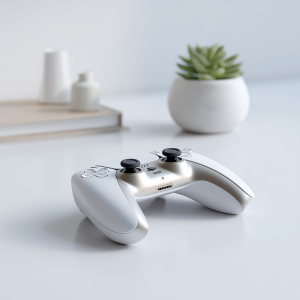Ever feel like your workday is a blur of tasks and meetings, and by the end, you wonder where all the time went? You’re not alone. Many professionals struggle to keep track of their hours, which can make it hard to figure out what’s really getting done. That’s where time tracking for productivity comes in. It’s not just about logging hours; it’s about understanding your work habits and finding ways to be more productive. Whether you’re a freelancer juggling multiple clients or part of a team trying to hit deadlines, knowing how you spend your time can be a game-changer. Let’s dive into how time tracking can help you make the most of your workday.
Key Takeaways
- Time tracking helps you understand your work patterns and identify areas for improvement.
- Setting up a time tracking system involves choosing the right tools and accurately recording work sessions.
- Analyzing time tracking data can reveal productivity patterns and help you make adjustments.
- Time tracking offers benefits like insightful data but also comes with challenges like data overload.
- Using time tracking effectively can lead to better project estimates and improved workflow.
How Does Time Tracking Inform Your Work Patterns?

Time tracking is a powerful way to understand and improve your work habits. By monitoring workflow efficiency, you gain insights into how you allocate your time across various tasks and projects. This information can lead to more informed decisions about how to optimize your daily routine.
Identifying Areas of Improvement with Time-Tracking
Time tracking isn’t just about logging hours; it’s about finding patterns and identifying areas for improvement. Here are some ways it can help:
- Spotting Time Wasters: By tracking your activities, you can see where you’re losing time, whether it’s in meetings, emails, or social media.
- Balancing Workloads: It helps in recognizing who is overburdened and who has capacity, allowing for better task distribution.
- Improving Estimates: With historical data, you can make more accurate predictions about how long future tasks will take.
Time tracking is like having a mirror for your work habits. It reflects not just how you spend your time, but also how you can tweak your schedule for better efficiency.
Incorporating time tracking into your routine can transform the way you work, leading to enhanced productivity and a more balanced workload. It’s not just about keeping tabs on hours but about gaining insights that can lead to meaningful changes in how you manage your workday.
For more on how time tracking can enhance project management and lead to better outcomes, consider exploring effective time tracking in project management.
How Can You Set Up a Time Tracking System Step by Step?
Setting up a time tracking system might seem daunting at first, but with a detailed time tracking guide, you can streamline the process and boost your productivity. Let’s break it down into manageable steps.
Choosing the Right App or Tool for Time-Tracking
Selecting the right tool is crucial. Here’s how you can go about it:
- Identify Your Needs: Determine what you need from a time-tracking tool. Do you need it for personal use or team management? Are you looking for simple time logs or detailed analytics?
- Explore Options: There are numerous tools available, from simple apps to comprehensive software suites. Consider popular tools like Toggl, Clockify, or Hubstaff, which offer features ranging from basic time tracking to advanced project management.
- Test Before You Commit: Most tools offer free trials. Use this period to test the features and see if they align with your workflow.
Recording Work Sessions Accurately
Accurate time tracking is essential for meaningful data. Here’s how to ensure you’re recording your work sessions effectively:
- Set Clear Guidelines: Establish when and how time should be tracked. Decide whether to track all activities or only specific tasks.
- Use Timers: Utilize timers to start and stop tracking as you begin and end tasks. This helps in maintaining accuracy and reduces the chances of forgetting to log time.
- Regular Reviews: At the end of each week, review your time logs to ensure accuracy and make necessary adjustments.
Setting up a time tracking system is not just about monitoring hours; it’s about understanding how you spend your time to make informed decisions and improve productivity.
By following these steps, you can create a time tracking system that not only helps in managing time better but also provides insights to enhance your workflow. Remember, the goal is to work smarter, not harder.
How Do You Analyze Data to Boost Productivity?

Interpreting Patterns and Making Adjustments
When it comes to boosting productivity, analyzing data is like having a map for your journey. You can’t make improvements if you don’t know where you stand. Start by gathering data from your time-tracking tools. Look for patterns in how time is being used across projects and tasks. Maybe you notice that meetings are eating up more time than expected or that certain tasks take longer than anticipated.
Steps to Analyze Your Data:
- Collect Data: Use your time-tracking software to gather information on how much time is spent on various tasks.
- Identify Patterns: Look for recurring themes or bottlenecks that slow down your workflow.
- Set Benchmarks: Establish what an efficient day or week looks like based on your data.
- Make Adjustments: Use the insights to tweak your schedule, prioritize tasks, or even delegate where necessary.
Analyzing your data is not just about numbers; it’s about understanding the story behind your workflow. By identifying where your time goes, you can make informed decisions to improve efficiency.
Consider using techniques like the Pomodoro Technique and Eisenhower Matrix to help prioritize tasks and manage your time better. These methods can guide you in making the necessary adjustments to enhance productivity without feeling overwhelmed.
Continuous Improvement
Once you’ve made initial adjustments, it’s crucial to keep the momentum going. Here’s how:
- Regular Reviews: Schedule weekly check-ins to assess what’s working and what’s not.
- Feedback Loops: Get input from your team or even self-reflect to see where improvements can be made.
- Adapt and Evolve: Be open to changing strategies if something isn’t delivering the results you want.
Remember, the goal is to create a flexible system that grows with you, adapting to new challenges and opportunities. By consistently analyzing your data and making necessary tweaks, you’ll find that your workflow becomes more streamlined and effective over time.
Pros and Cons of Time Tracking
Benefits of Insightful Data
Time tracking can be a game-changer for organizations and individuals alike. It provides a clear picture of how time is spent, helping to identify areas where efficiency can be improved. Here’s why it can be a boon:
- Enhanced Productivity: By analyzing time logs, you can pinpoint tasks that take longer than expected and find ways to streamline them.
- Better Project Management: With detailed records, project managers can adjust timelines and resources to ensure projects stay on track.
- Accurate Billing: For businesses, especially those in service industries, time tracking ensures clients are billed accurately for the hours worked.
Challenges and Data Overload Considerations
Despite its benefits, time tracking isn’t without its challenges. Here are some potential downsides:
- Employee Resistance: Some employees might feel micromanaged or stressed by constant monitoring, which can affect morale.
- Inaccuracy Risks: If employees forget to log their time or make errors, the data can become unreliable.
- Overwhelming Data: The sheer volume of data collected can be daunting, leading to analysis paralysis if not managed properly.
Implementing a time clock in the workplace can mitigate some of these challenges by automating the tracking process, reducing errors, and easing the burden on employees.
Conclusion
In wrapping up, keeping track of your time isn’t just about filling out spreadsheets or checking off boxes. It’s about understanding how you spend your day and finding ways to make it work better for you. Whether you’re using a timer to stay focused or reflecting on your productivity at the end of the week, these small steps can lead to big changes. Remember, it’s not about squeezing every second out of your day but about making your time count. So, take a deep breath, try out some of these tips, and see how they fit into your routine. Who knows, you might just find yourself with a bit more time for the things you love.
Frequently Asked Questions
What is time tracking and why is it important?
Time tracking is keeping track of how you spend your time on different tasks. It’s important because it helps you understand where your time goes, improve your productivity, and make better project estimates.
How can time tracking improve my work efficiency?
By showing you how much time you spend on tasks, time tracking helps you find areas where you can be more efficient. This way, you can adjust your workflow to get more done in less time.
What tools can I use for time tracking?
There are many tools available like Toggl, Clockify, and Everhour. These tools help you log your work hours and analyze your productivity patterns.
Is time tracking only for businesses?
No, time tracking can be useful for anyone who wants to manage their time better, whether you’re a freelancer, student, or just someone looking to be more organized.
How does time tracking help with remote work?
Time tracking helps remote workers by providing a clear picture of how work hours are spent, which can improve accountability and productivity without constant check-ins from managers.
Can time tracking help reduce stress?
Yes, by organizing your tasks and managing your time better, time tracking can help reduce last-minute rushes and stress, giving you more time for relaxation.
What are some challenges of time tracking?
Some challenges include remembering to log your time consistently and the potential feeling of being monitored, which can be addressed with clear communication and setting personal goals.
How can I get started with time tracking?
Start by choosing a simple tool that fits your needs, set clear goals for what you want to achieve, and begin by tracking a few tasks each day to build the habit.








